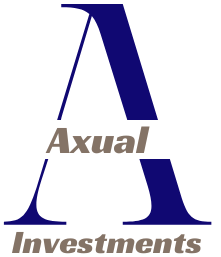A Mega Roth Conversion is a savvy retirement planning strategy that can help high earners optimize their retirement savings and take advantage of the tax benefits of a Roth IRA. This comprehensive guide will provide valuable insights into the Mega Roth Conversion process, its benefits, and ways to optimize your retirement assets.
Key Takeaways:
- Mega Roth Conversion is a tax-efficient retirement planning strategy for high earners.
- It involves converting traditional IRA funds into a Roth IRA.
- This strategy is particularly beneficial for individuals exceeding the income limits for direct Roth IRA contributions.
- The Backdoor Roth Conversion and the Mega Backdoor Roth Conversion are two popular methods.
- Consult a financial advisor or tax professional to make informed decisions and maximize the benefits of a Mega Roth Conversion.

Understanding the Backdoor Roth Conversion
The Backdoor Roth Conversion is a legal loophole that allows individuals to contribute to a Roth IRA even if they exceed the income limits for direct contributions. As of 2022, the income limits for Roth IRA contributions are $144,000 for single filers and $214,000 for joint filers. The Backdoor Roth Conversion involves the following steps:
Step 1: Contribute to a Traditional IRA
In the first step, individuals contribute to a traditional IRA. Unlike Roth IRAs, there are no income limits for contributing to a traditional IRA. The contributions made to the traditional IRA are typically after-tax, meaning they have already been taxed.
Step 2: Convert Traditional IRA to Roth IRA
After contributing to the traditional IRA, the next step is to convert the funds to a Roth IRA. This conversion can be done by contacting the financial institution where the traditional IRA is held and requesting the conversion. During the conversion process, individuals will need to pay taxes on any pre-tax contributions or earnings within the traditional IRA.
Step 3: Pay Taxes on Converted Funds
When converting the traditional IRA to a Roth IRA, individuals will need to pay taxes on any pre-tax contributions or earnings within the traditional IRA. The amount of taxes owed will depend on the individual’s income tax rate. It’s important to consult with a tax professional to ensure accurate tax calculations and filing.
By utilizing the Backdoor Roth Conversion, individuals can leverage this strategy to contribute to a Roth IRA and take advantage of the tax benefits it offers, even if they exceed the income limits for direct contributions. It’s crucial to carefully navigate the conversion process and consult with a financial advisor or tax professional to ensure compliance with tax laws and optimize retirement income planning.
| Step | Action |
|---|---|
| 1 | Contribute to a Traditional IRA |
| 2 | Convert Traditional IRA to Roth IRA |
| 3 | Pay Taxes on Converted Funds |
The Mega Backdoor Roth Conversion Explained
The Mega Backdoor Roth Conversion is a powerful strategy for individuals looking to optimize their retirement savings through a tax-efficient approach. By taking advantage of this conversion method, individuals can potentially contribute significant amounts of money to a Roth IRA, beyond the standard contribution limits.
To execute a Mega Backdoor Roth Conversion, individuals can make after-tax contributions to their employer-sponsored retirement plan, such as a 401(k). Once these after-tax contributions are made, they can then be converted to a Roth IRA, unlocking the tax benefits and potential growth that come with it.
One of the key advantages of the Mega Backdoor Roth Conversion is the ability to contribute well beyond the annual contribution limits set for traditional Roth IRA contributions. While the standard contribution limit for 2022 is $6,000 ($7,000 for individuals aged 50 and older), the Mega Backdoor Roth Conversion allows individuals to potentially contribute up to $61,000 ($66,000 starting in 2023) annually to a Roth IRA.
This strategy is particularly valuable for high earners who may exceed the income limits for direct Roth IRA contributions. By making after-tax contributions to their employer-sponsored retirement plan and converting those funds to a Roth IRA, they can capitalize on the tax-free growth potential of a Roth IRA and enjoy tax-free withdrawals in retirement.
Benefits of the Mega Backdoor Roth Conversion:
- Maximizes retirement savings: The Mega Backdoor Roth Conversion enables individuals to contribute more money to a Roth IRA, potentially accelerating the growth of their retirement savings.
- Tax-efficient retirement strategy: By making after-tax contributions and converting them to a Roth IRA, individuals can benefit from tax-free growth and tax-free withdrawals in retirement.
- Flexible retirement income planning: A Roth IRA offers flexibility in retirement by providing tax-free withdrawals, allowing individuals to have more control over their retirement income.
- Long-term tax benefits: By converting funds to a Roth IRA, individuals can minimize their future tax obligations, as qualified withdrawals from a Roth IRA are tax-free.
By understanding and implementing the Mega Backdoor Roth Conversion, individuals can optimize their retirement savings and take advantage of the tax benefits offered by a Roth IRA. However, it’s important to consult with a financial advisor or tax professional to ensure eligibility requirements are met and to make informed decisions based on individual financial situations.
| Mega Backdoor Roth Conversion | Standard Roth IRA Contribution |
|---|---|
| Allows contributions beyond annual limits | Subject to annual contribution limits ($6,000 in 2022) |
| Utilizes after-tax contributions to employer-sponsored plans | Contributions made with pre-tax dollars |
| Offers tax-free growth and tax-free withdrawals in retirement | Offers tax-free growth and tax-free withdrawals in retirement |
| Available to high earners who exceed income limits | Available to individuals within income limits ($144,000 for single filers and $214,000 for joint filers in 2022) |

Implementing the Mega Backdoor Roth Conversion
To implement the Mega Backdoor Roth Conversion, certain eligibility requirements must be met. The employer-sponsored retirement plan must allow for after-tax contributions and in-service conversions or distributions. Once these requirements are met, the conversion process involves the following steps:
Step 1: Confirm Eligibility
Before proceeding with the Mega Backdoor Roth Conversion, ensure that your employer’s retirement plan allows after-tax contributions and in-service conversions or distributions. Review the plan documents and consult with your HR department or plan administrator to clarify any restrictions or limitations.
Step 2: Make After-Tax Contributions
Once eligibility is confirmed, begin making after-tax contributions to your employer-sponsored retirement plan, such as a 401(k). Determine the maximum allowable after-tax contribution based on the plan’s limits and your financial capacity. Remember that the contribution amount will impact the total conversion amount to a Roth IRA.
Step 3: Convert After-Tax Contributions to a Roth IRA
After making after-tax contributions, initiate the conversion process to transfer the after-tax funds from your employer-sponsored retirement plan to a Roth IRA. Consult with your plan administrator or financial institution for the necessary forms and instructions. Ensure that the conversion is processed correctly to maximize the tax benefits of the Mega Backdoor Roth Conversion.
It’s important to note that tax considerations play a significant role in the Mega Backdoor Roth Conversion. Consult with a qualified tax professional to understand the potential tax implications and ensure compliance with IRS regulations. Additionally, regularly review and adjust your retirement savings strategy as your financial situation and goals evolve.
| Step | Actions |
|---|---|
| 1 | Confirm Eligibility |
| 2 | Make After-Tax Contributions |
| 3 | Convert After-Tax Contributions |
Important Considerations for Mega Backdoor Roth Conversions
When executing a Mega Backdoor Roth Conversion, there are several important considerations to keep in mind to optimize your retirement savings and ensure a tax-efficient strategy.
1. Eligibility and Contribution Limits
Before proceeding with a Mega Backdoor Roth Conversion, it’s crucial to confirm that your employer-sponsored retirement plan allows after-tax contributions and in-service conversions or distributions. Additionally, be aware of the contribution limits for these conversions, as they can vary depending on your age and the specific plan.
2. Tax Implications
“It’s essential to understand the tax implications of a Mega Backdoor Roth Conversion,” says financial advisor Jane Smith. “While the contributions are after-tax, the conversion itself may trigger tax liabilities, especially if you have pre-tax funds in your retirement plan.”
Consult with a tax professional to ensure you fully understand the tax ramifications before proceeding with the conversion. They can help you navigate any potential tax liabilities and advise on the best strategy to minimize your tax obligations.
3. Long-Term Retirement Goals
Consider your long-term retirement goals when deciding to pursue a Mega Backdoor Roth Conversion. Evaluate whether the benefits, such as tax-free growth and tax-free withdrawals in retirement, align with your overall retirement strategy. Additionally, assess whether you have the financial capacity to make the after-tax contributions required for the conversion without compromising other financial goals or obligations.
By keeping these important considerations in mind, you can make informed decisions and optimize your retirement savings through a Mega Backdoor Roth Conversion.
| Considerations | Summary |
|---|---|
| Eligibility and Contribution Limits | Confirm plan eligibility and contribution limits for after-tax conversions. |
| Tax Implications | Understand potential tax liabilities associated with the conversion. |
| Long-Term Retirement Goals | Assess alignment with retirement goals and financial capacity for contributions. |
Benefits of Mega Backdoor Roth Conversions
Mega Backdoor Roth Conversions offer significant tax benefits for individuals looking to optimize their retirement savings. By taking advantage of this strategy, individuals can enjoy the following benefits:
- Tax-Free Growth: Contributions made to a Roth IRA through the Mega Backdoor Conversion are after-tax, meaning that they grow tax-free. This allows individuals to potentially accumulate a larger nest egg for retirement without having to worry about paying taxes on their earnings.
- Tax-Free Withdrawals: Unlike traditional IRAs or 401(k) plans, Roth IRAs offer tax-free withdrawals in retirement. By converting funds through the Mega Backdoor Roth Conversion, individuals can set themselves up for tax-free income during their golden years.
- Flexibility: Roth IRAs do not have required minimum distributions (RMDs) during the account holder’s lifetime. This provides individuals with greater flexibility in managing their retirement income and allows for potential tax planning strategies.
- Estate Planning: Roth IRAs can be a valuable estate planning tool, as they offer potential tax advantages to beneficiaries. By utilizing the Mega Backdoor Roth Conversion, individuals can pass on tax-free assets to their heirs, providing them with a financial advantage.
In summary, Mega Backdoor Roth Conversions offer individuals the opportunity to optimize their retirement savings through tax-efficient strategies. By taking advantage of tax-free growth, tax-free withdrawals, flexibility, and estate planning advantages, individuals can position themselves for a financially secure retirement. However, it is important to consult with a financial advisor or tax professional to ensure that the Mega Backdoor Roth Conversion is suitable for individual circumstances.
| Benefits | Description |
|---|---|
| Tax-Free Growth | Contributions made to a Roth IRA through the Mega Backdoor Conversion grow tax-free. |
| Tax-Free Withdrawals | Roth IRAs offer tax-free withdrawals in retirement. |
| Flexibility | Roth IRAs do not have required minimum distributions (RMDs) during the account holder’s lifetime. |
| Estate Planning | Roth IRAs can be a valuable estate planning tool, offering potential tax advantages to beneficiaries. |
Alternative Retirement Savings Strategies
While the Mega Backdoor Roth Conversion is a powerful retirement planning strategy, it may not be suitable for everyone. Fortunately, there are alternative options to consider when it comes to maximizing your retirement savings. These strategies provide tax-efficient ways to save for retirement and can complement your overall financial plan.
1. Traditional IRA Contributions
If you exceed the income limits for direct Roth IRA contributions, you can still make contributions to a traditional IRA. While contributions to a traditional IRA are not tax-deductible if you are a high earner, the earnings on those contributions can grow tax-deferred until retirement. You can then consider converting your traditional IRA funds to a Roth IRA in years when your income is lower, allowing you to take advantage of tax-free growth.
2. Employer-Sponsored Retirement Plans
Maximizing your contributions to employer-sponsored retirement plans, such as a 401(k) or 403(b), can also be an effective way to save for retirement. These plans offer tax advantages, such as tax-deferred growth and potential employer matching contributions. By contributing the maximum allowed amount to your employer-sponsored plan, you can potentially lower your taxable income and increase your retirement savings simultaneously.
3. Taxable Investment Accounts
If you have already maximized your contributions to tax-advantaged retirement accounts, consider investing in taxable investment accounts. While these accounts do not offer the same tax benefits as retirement accounts, they provide flexibility in terms of accessing your funds before retirement. Additionally, with proper tax-efficient investment strategies, you can minimize the tax impact of your investments.
| Strategy | Tax-Advantaged | Contribution Limits |
|---|---|---|
| Traditional IRA Contributions | No | $6,000 (under 50), $7,000 (50 or older) |
| Employer-Sponsored Retirement Plans | Yes | $19,500 (under 50), $26,000 (50 or older) |
| Taxable Investment Accounts | No | No limits |
Remember, each alternative retirement savings strategy has its own advantages and considerations. It’s important to evaluate your financial goals, risk tolerance, and tax situation before deciding which strategy is right for you. Consulting with a financial advisor can help you make informed decisions and create a comprehensive retirement savings plan tailored to your needs.
Conclusion
Mega Roth Conversions, whether through the Backdoor Roth Conversion or the Mega Backdoor Roth Conversion, can be valuable retirement planning strategies for high earners looking to optimize their retirement savings. These strategies offer tax-efficient ways to contribute to a Roth IRA and take advantage of the tax benefits it offers. By converting traditional IRA funds into a Roth IRA, individuals can maximize their retirement savings and potentially benefit from tax-free withdrawals in the future.
However, it’s essential to understand the eligibility requirements, tax implications, and contribution limits of each conversion strategy. Consulting a financial advisor or tax professional can provide personalized guidance and ensure that you make informed decisions based on your specific financial situation. They can help you navigate the complex rules and regulations surrounding Mega Roth Conversions and tailor the strategy to align with your retirement goals.
Unlocking your wealth potential through a Mega Roth Conversion requires careful planning and consideration. By leveraging these retirement planning strategies, you can optimize your retirement assets, potentially reduce your tax liabilities, and secure a more financially stable future. Start exploring the possibilities of a Mega Roth Conversion today and take charge of your retirement savings.
FAQ
What is a Mega Roth Conversion?
A Mega Roth Conversion is a tax-efficient retirement planning strategy that involves converting traditional IRA funds into a Roth IRA, allowing high earners to maximize their retirement savings.
What is the Backdoor Roth Conversion?
The Backdoor Roth Conversion is a legal loophole that allows individuals to contribute to a Roth IRA even if they exceed the income limits for direct contributions.
What is the Mega Backdoor Roth Conversion?
The Mega Backdoor Roth Conversion is a strategy that allows individuals to contribute large sums of money to a Roth IRA, well beyond the standard contribution limits.
What are the eligibility requirements for the Mega Backdoor Roth Conversion?
The employer-sponsored retirement plan must allow for after-tax contributions and in-service conversions or distributions to be eligible for the Mega Backdoor Roth Conversion.
How does the Mega Backdoor Roth Conversion work?
The Mega Backdoor Roth Conversion involves making after-tax contributions to an employer-sponsored retirement plan and then converting those funds to a Roth IRA.
What are the benefits of Mega Backdoor Roth Conversions?
Mega Backdoor Roth Conversions offer significant tax benefits and can help optimize retirement savings.
Are there alternative retirement savings strategies?
Yes, if the Mega Backdoor Roth Conversion is not feasible or suitable, there are alternative retirement savings strategies to consider.
How can I get started with a Mega Roth Conversion?
To get started with a Mega Roth Conversion, it is recommended to consult a financial advisor or tax professional to understand the eligibility requirements and tax implications.

